Fake plant walls have become an appealing way to decorate indoor and outdoor walls. As this trend spreads, more and more customers appreciate the convenience and aesthetic appeal of these products.
Combined with market growth, this interest is good news for retailers who can take advantage of a burgeoning market. Consequently, retailers will want to research which products stand to work best with consumers, offering them diverse options to beautify their living spaces.
Table of Contents
Fake plant wall market research and drivers
Fake plant wall tips, materials, and examples
Fake wall trends
Conclusion
Fake plant wall market research and drivers

Sales of fake plant walls, also known as faux or artificial plant walls, are growing steadily. Figures indicate that the market value of fake plant walls in 2023 stood at an impressive USD 1,019 million.
Analysts predict that sales of artificial plants will increase at a compound annual growth rate (CAGR) of 4.5% until 2033, achieving a high point of USD 1,582.48 million.
Keyword search volumes
Google Ads average keyword searches for fake plant walls also reflect growing interest. Searches went from 6,600 in December 2022 to 9,900 in June 2023, declining to 6,600 in November 2023, indicating a seasonal preference for artificial plant walls in the warmer months in the northern hemisphere.
Fake plant market drivers
Market researchers have identified that these are the primary forces likely driving purchases of fake plants and fake plant walls:
- A growing use of fake plants and walls as decorations in the residential and commercial sectors
- The attractive, low maintenance, and convenient nature of fake plant walls, which require little care and are suitable for allergy sufferers
- Eco-friendly fake plant walls that look real and are non-toxic are helping them gain traction
- Artificial plants that are fire-retardant are especially sought-after
Fake plant wall tips, materials, and examples

When investing in the fake plant wall market, retailers will benefit from first making a number of crucial decisions to aid sourcing:
- Decide whether to sell fake plant walls to individuals or businesses
- Choose to focus on indoor or outdoor fake plants or both
- Market these products as interior and exterior decor to create beautiful spaces, as privacy barriers, or to block noise
- Use these decisions to extend market reach, targeting landscapers, real estate developers, homeowner associations, etc.
Fake plants are commonly made from plastic, silk, polyester, clay, cotton, or nylon. The most popular artificial plant materials include plastic, polyethylene (PE), polypropylene (PP), and silk. Of these materials, PE and PE are the most suitable for when the plants will be used to clad exteriors.
Retailers will want to build their inventories with various fake plant combinations. Below are several examples of what is trending in the 2024 market below:
Decorative green artificial plant walls
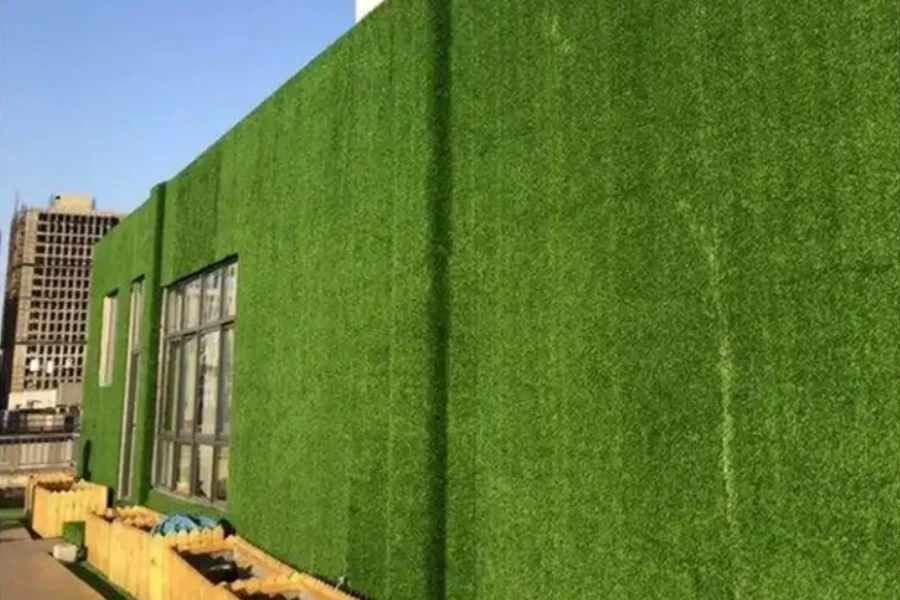
Only under close scrutiny is it obvious that this fake plant wall is artificial. Coming in three realistic shades of green with different backings, this wall, made from UV-resistant PP and PE plastic, features durable latex backing with self-drainage holes. As well as being easy to maintain, it is both child and pet-safe.
Fake plant wall foliage
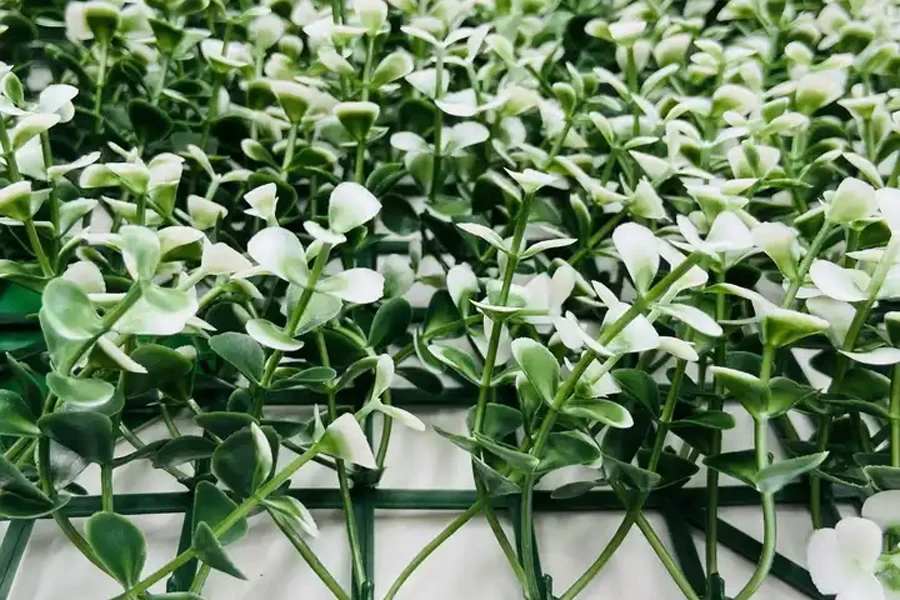
Resembling real waxy leaves, this fake wall foliage comes in an appealing selection of varieties and colors. It can also be mounted to indoor or outdoor spaces since the PE composition and UV treatment ensure durability and versatility, increasing its appeal.
Customized jungle fake plant walls

With an authentic appearance, this jungle plant selection can also be customized depending on what type of look the customer is aiming for specifically. Besides introducing unique energy to a living space, they’re also low maintenance, UV-resistant, and fire-retardant, therefore making them suitable for indoor and outdoor purposes.
Artificial vertical plant fence panels

For those wanting a fake plant wall with some extra color, these fake plant fences come with a range of foliage and flowers. Retailers can choose various leaf types and flower colors to offer customers a range of decor options. They’re also lifelike, eco-friendly, and non-toxic.
Artificial silk greenery flower wall panels
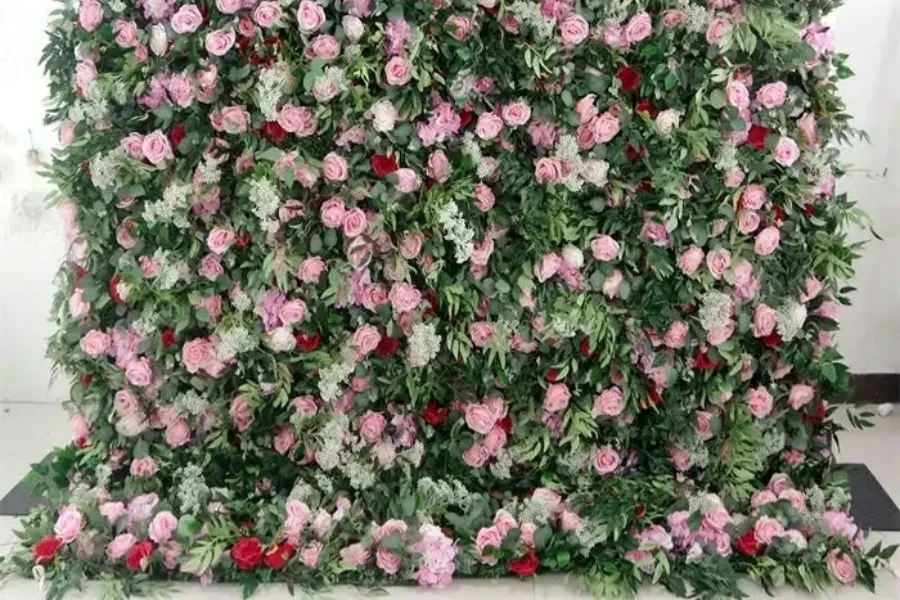
Wedding and event planners will especially value these decorative wall panels. Against a dense background of realistic foliage, lifelike silk roses come alive in shades of white, pink, red, and other colors. These blooms can be placed in different arrangements to stunning effect for various events or garden spaces, making them a valuable asset for commercial and residential purposes.
Artificial green moss turf walls
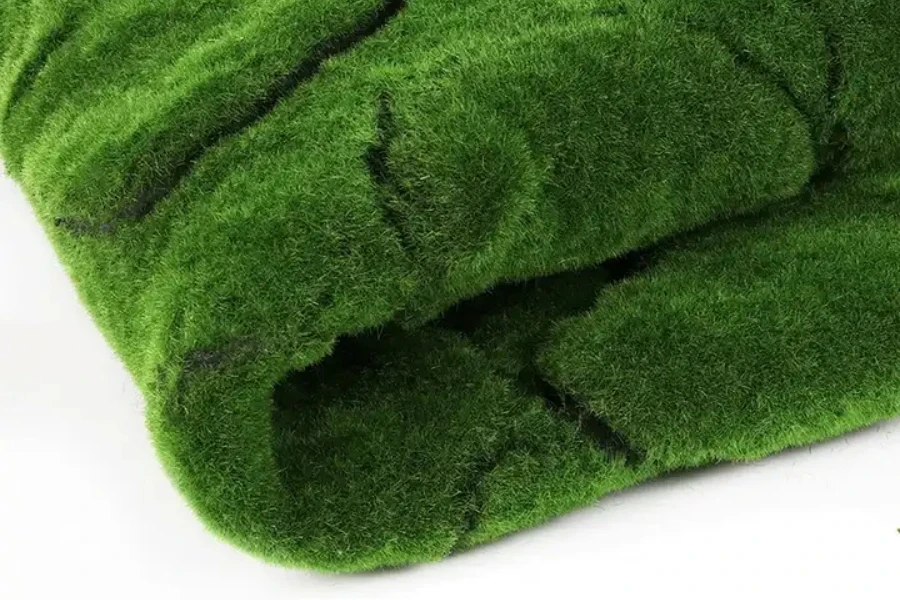
Retailers may also want to stock various green moss upper color options, allowing consumers to select different base colors. The combined effect of these fusions creates beautiful natural-looking effects and textures.
Turf wall applications include wall coverings, boundary creations, and adding textural interest in commercial spaces, offering retailers a broad target market.
Fake wall trends
Customers usually seek out fake walls because they are decorative, sustainable, convenient, and recyclable – all primary trends that are encouraging steady sales in this market. Below we take a close look at each:
Decorative
Water shortages are contributing to the growth of the decorative trend of faux plants in some regions. In addition, fake plants provide greenery throughout the year, versus real plants that are seasonal.
Sustainable
Another benefit of this decorative trend is that fake plant walls are sustainable and affordable. Available throughout the year, they do not require the resources necessary to cultivate real plants.
Convenient
Most commercial and residential users want the benefits of decorative fake plant walls without the work that goes into maintaining live plants. Therefore, fake plants are a low-to-no maintenance option that can create beautiful, calming, and hypoallergenic environments.
Recyclable
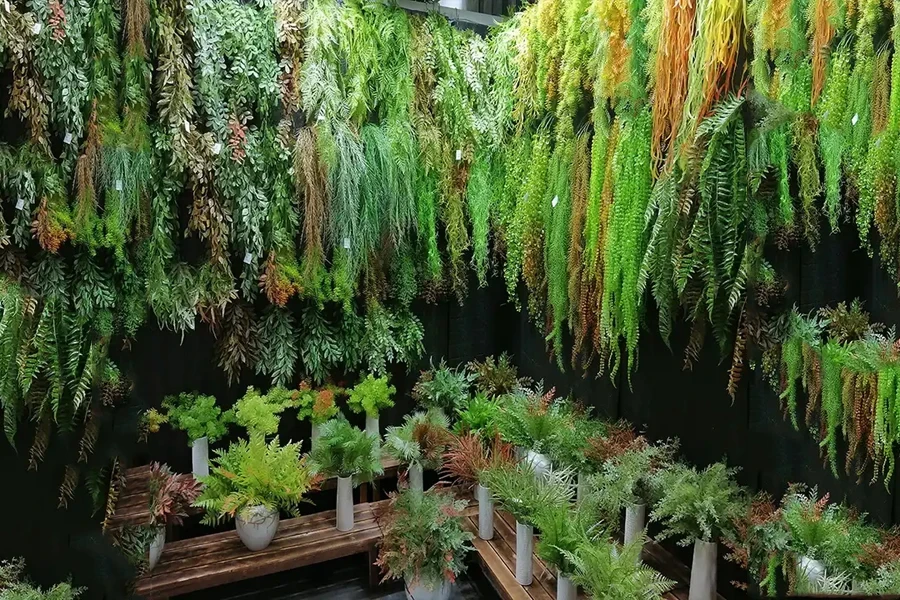
Not all plastics are recyclable, but PE and PP plastics are. Therefore, look for fake plant walls made from these materials. PVC is also recyclable, meeting the growing trend for renewable resources.
Conclusion
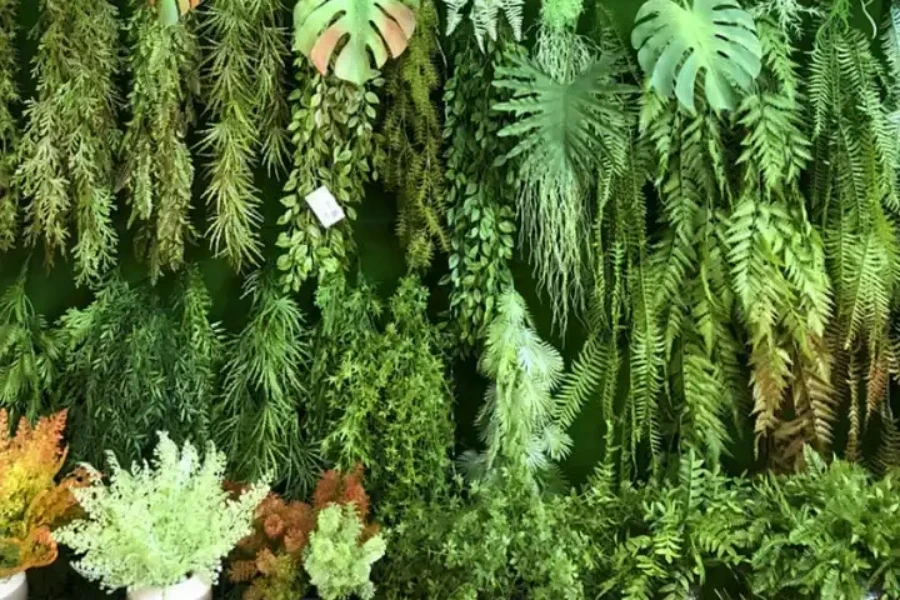
Trends that are helping to boost the popularity of fake walls and artificial plants in 2024 are their decorative, sustainable, convenient, and recyclable features.
Retailers can take advantage of these market and trending insights to build inventories that appeal to their customers. Retailers can further increase sales by stocking a variety of fake wall plants for residential and commercial users, as well as developing personalized options.
The fake plant Chovm.com showroom features a huge range of diversified products, catering to a wide range of markets and preferences.




